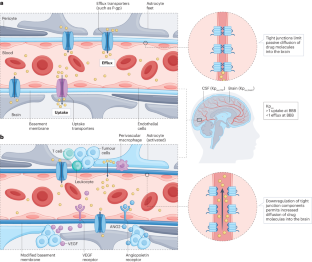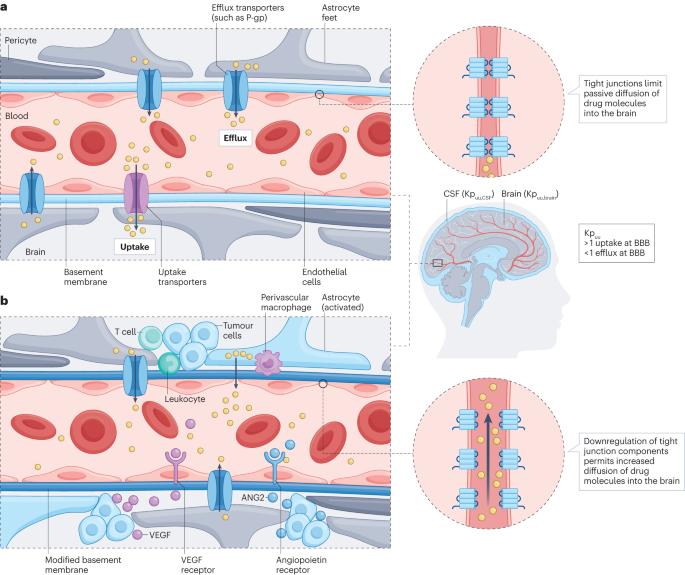肿瘤驱动的非小细胞肺癌癌症患者颅内转移的新疗法和不断发展的评估标准。
IF 81.1
1区 医学
Q1 ONCOLOGY
引用次数: 0
摘要
非小细胞肺癌癌症(NSCLC)患者生存率的提高,主要是由于免疫检查点抑制剂和新型靶向治疗改善了对全身疾病的控制,突出了中枢神经系统(CNS)转移作为一种毁灭性但常见的并发症所带来的挑战,高达50%的患者在疾病过程中发生这种病变。早期生成的酪氨酸激酶抑制剂(TKIs)通常为癌基因驱动的NSCLC患者提供强有力的系统性疾病控制,尽管由于无法穿过血脑屏障,这些药物通常无法在中枢神经系统中积累到治疗相关的浓度。然而,在过去几年中,随着几种新的或后一代TKI的出现,中枢神经系统外显率有所提高,范式发生了转变。临床前和临床研究的数据表明,这些药物对脑转移具有良好的活性。在这篇综述中,我们描述了目前针对NSCLC患者各种致癌驱动因素的TKIs颅内活性的临床前和临床证据,重点是具有增强中枢神经系统穿透力、软脑膜疾病和鞘内治疗选择需求的新型药物。我们还讨论了未来临床研究的评估标准和监管考虑。本文章由计算机程序翻译,如有差异,请以英文原文为准。


Emerging therapeutics and evolving assessment criteria for intracranial metastases in patients with oncogene-driven non-small-cell lung cancer
The improved survival outcomes of patients with non-small-cell lung cancer (NSCLC), largely owing to the improved control of systemic disease provided by immune-checkpoint inhibitors and novel targeted therapies, have highlighted the challenges posed by central nervous system (CNS) metastases as a devastating yet common complication, with up to 50% of patients developing such lesions during the course of the disease. Early-generation tyrosine-kinase inhibitors (TKIs) often provide robust systemic disease control in patients with oncogene-driven NSCLCs, although these agents are usually unable to accumulate to therapeutically relevant concentrations in the CNS owing to an inability to cross the blood–brain barrier. However, the past few years have seen a paradigm shift with the emergence of several novel or later-generation TKIs with improved CNS penetrance. Such agents have promising levels of activity against brain metastases, as demonstrated by data from preclinical and clinical studies. In this Review, we describe current preclinical and clinical evidence of the intracranial activity of TKIs targeting various oncogenic drivers in patients with NSCLC, with a focus on newer agents with enhanced CNS penetration, leptomeningeal disease and the need for intrathecal treatment options. We also discuss evolving assessment criteria and regulatory considerations for future clinical investigations. Despite improved outcomes owing to advances in systemic targeted therapies, patients with brain metastases from oncogene-driven non-small-cell lung cancer continue to have a poor prognosis. This situation largely reflects the limited central nervous system (CNS) penetrance of most targeted therapies, a limitation that is beginning to be addressed with the development of later-generation agents. In this Review, the authors describe the CNS activity of targeted therapies for patients with oncogene-driven non-small-cell lung cancers, including discussions of novel agents with improved CNS penetrance and the potential of intrathecal administration for patients with leptomeningeal disease.
求助全文
通过发布文献求助,成功后即可免费获取论文全文。
去求助
来源期刊
CiteScore
99.40
自引率
0.40%
发文量
114
审稿时长
6-12 weeks
期刊介绍:
Nature Reviews publishes clinical content authored by internationally renowned clinical academics and researchers, catering to readers in the medical sciences at postgraduate levels and beyond. Although targeted at practicing doctors, researchers, and academics within specific specialties, the aim is to ensure accessibility for readers across various medical disciplines. The journal features in-depth Reviews offering authoritative and current information, contextualizing topics within the history and development of a field. Perspectives, News & Views articles, and the Research Highlights section provide topical discussions, opinions, and filtered primary research from diverse medical journals.

 求助内容:
求助内容: 应助结果提醒方式:
应助结果提醒方式:


